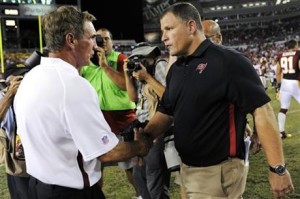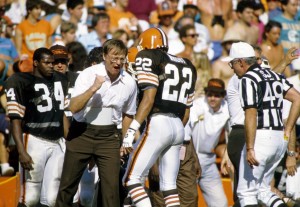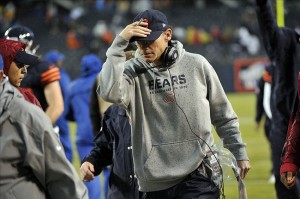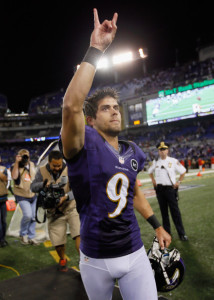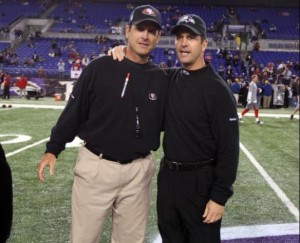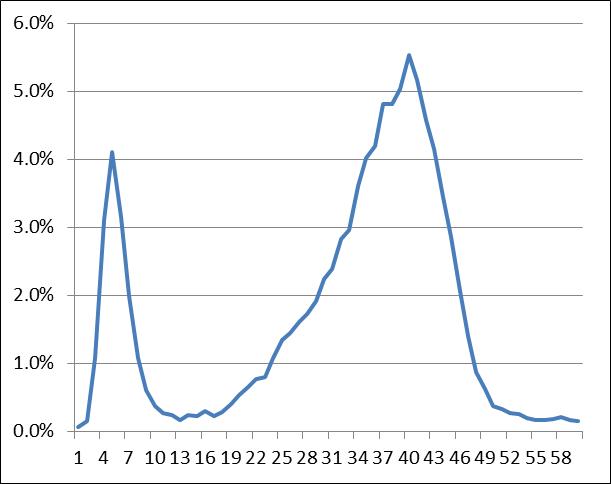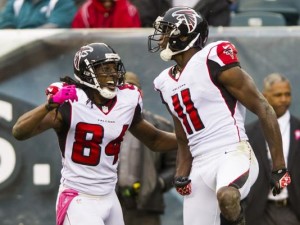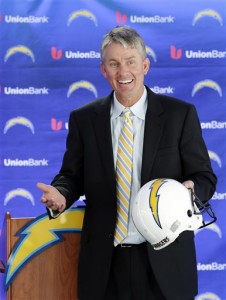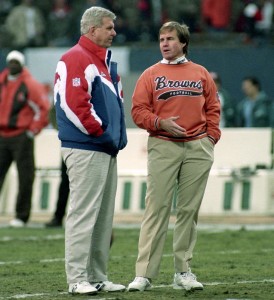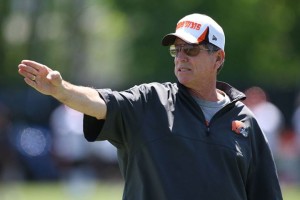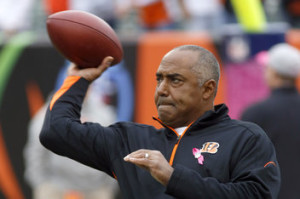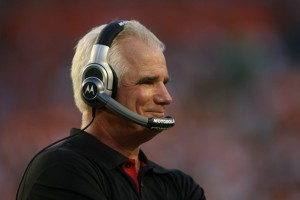It stands to reason that when a team has a bottom five scoring offense, they’re going to make some changes. But today we’re going to quantify what we all know. By definition, there were 55 teams to rank in the bottom five in scoring from 2002 to 2012. What changes did those teams make?
- 29 of the teams (53%) switched head coaches, 43 switched offensive coordinators (78%), and 32 teams (58%) had a different starting quarterback in week 1 of the following season. In 19 of the 55 cases (35%), the team got rid of the whole trio.
- I don’t think it’s too surprising that the offensive coordinator is the most likely casualty. In the 12 cases where the offensive coordinator was retained, the head coach was only fired in one of those seasons. That was in Cincinnati after the 2002 season, when Bob Bratkowski was kept after Dick LeBeau was replaced by Marvin Lewis. The Bengals drafted Carson Palmer with the first overall pick a few months later, but Jon Kitna kept the quarterback job for the 2003 season.
- In only four of the other 11 cases where the offensive coordinator was fired did the team switch quarterbacks. In 2009, Steve Spagnuolo and Pat Shurmur struggled in St. Louis under Marc Bulger; the team landed the number one overall pick, drafted Sam Bradford, and played him immediately. Also that year, Eric Mangini and Brian Daboll could not get the Cleveland offense humming under Brady Quinn. The solution was to bring in Jake Delhomme in 2010. In 2008, the Bengals offense struggled when Palmer missed most of the year due to injury. Lewis and Bratkowski were retained, as Cincinnati pinned the blame on Ryan Fitzpatrick. Finally, in 2006, Tampa Bay ranked 31st in scoring despite the presence of coaching guru Jon Gruden and Bill Muir. A rookie Bruce Gradkowski (playing after Chris Simms) was replaced in 2007 with Jeff Garcia.
There were only 7 of 55 situations where a team had a bottom five offense but brought back the head coach, offensive coordinator, and quarterback. Below is the full information for the 55 teams; analysis to come after the jump. For the Year N QB, I’ve listed the quarterback with the most attempts. For the Year N+1 QB, I chose to list the quarterback that started in week one of that season. All team/player/coach cells are linked to the relevant PFR page. [continue reading…]

